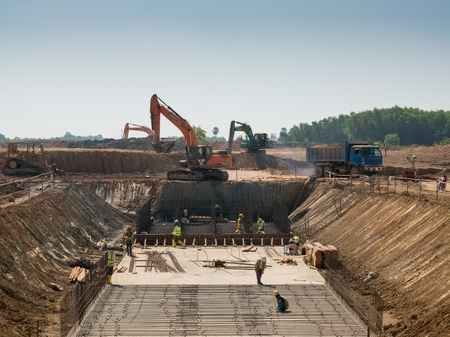Future Materials: Cutting-Edge Innovations in Civil Engineering.
The world of civil engineering has been undergoing a remarkable transformation in recent years, primarily fueled by the advent of new-age materials. Let's delve into some of these materials and understand how they are set to redefine the landscape of civil engineering.
Self-Healing Concrete
Traditional concrete, although robust and reliable, is prone to cracks and fissures over time, leading to structural vulnerabilities. This led scientists to develop a solution: self-healing concrete. It uses bacteria to repair cracks in the concrete structure. When water enters a crack, it reacts with the bacteria's spores, leading to the production of limestone, effectively filling the fissure.
Transparent Aluminum
Next on the horizon of innovation is transparent aluminum, a futuristic material that offers the strength of traditional metals but with the added benefit of transparency. Initially envisaged in science fiction, it has now become a reality and is likely to have a profound impact on architectural design, allowing for structures with unparalleled strength and aesthetic appeal.
3D-Printed Graphene
3D-printed graphene is another transformative material offering an impressive strength-to-weight ratio, superb electrical conductivity, and remarkable thermal properties. With 3D printing technology, we can now use graphene to construct lightweight but extremely strong structures, radically changing architectural possibilities.
Aerogel Insulation
Aerogels, the world's lightest solid materials, are superb insulators. They can drastically reduce heat transfer in buildings, making them more energy-efficient. The use of aerogels in civil engineering is increasing, and we may soon witness a revolution in green construction due to this cutting-edge material.
Carbon Nanotubes
Carbon nanotubes, cylindrical molecules composed of rolled-up sheets of single-layer carbon atoms, exhibit exceptional strength and stiffness. This makes them ideal for reinforcing materials in construction, potentially replacing steel and leading to lighter, more efficient structures.
Conclusion:
These advancements are just a fraction of the vast potential of future materials in civil engineering. It's an exciting era, and to keep up with these changes, academic institutions play a critical role in molding future engineers.
At Jodhpur Institute of Engineering & Technology, we are committed to staying abreast of these advancements and integrating them into our curriculum. We ensure our students are well-versed in these materials of the future, empowering them to become innovators in their field.
We're not just teaching civil engineering; we're shaping the future of it. Join us, and be part of this extraordinary journey.



















